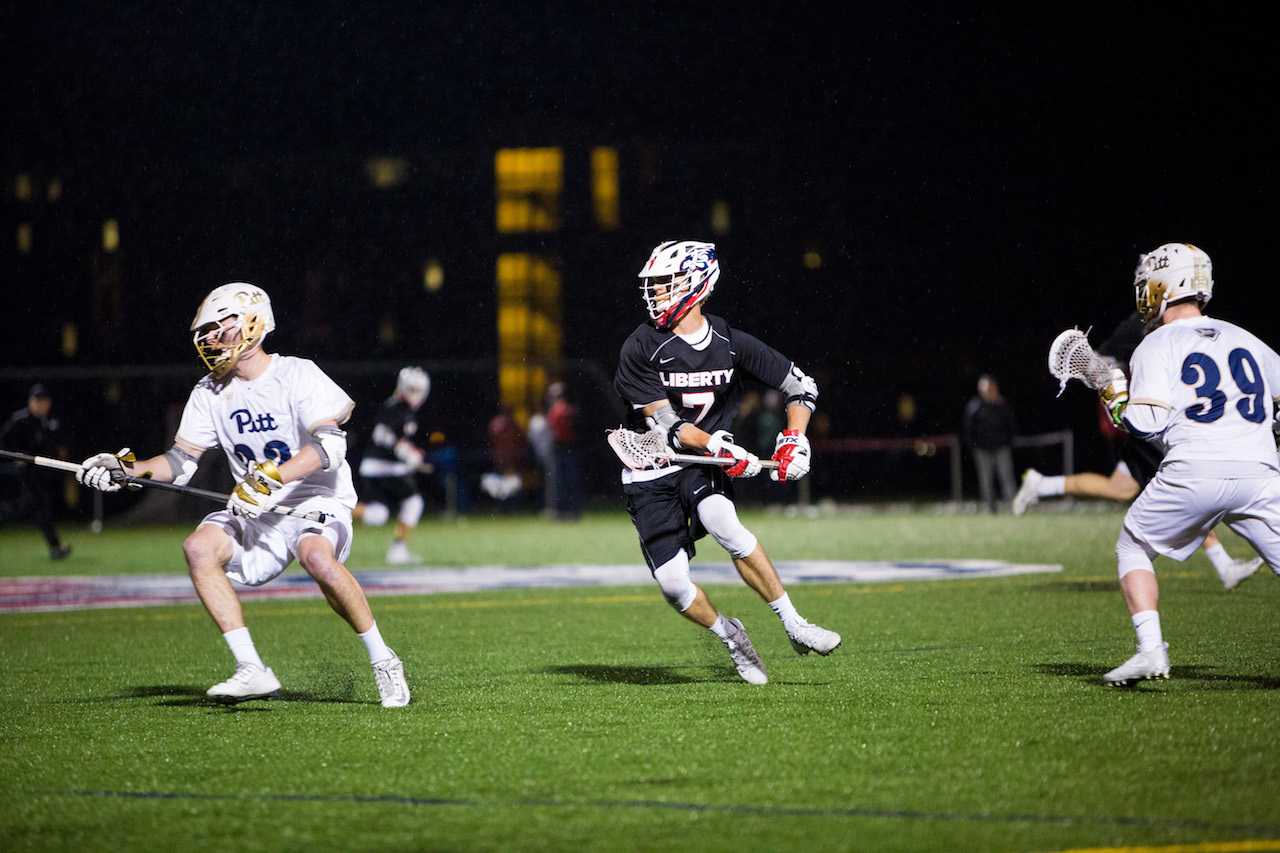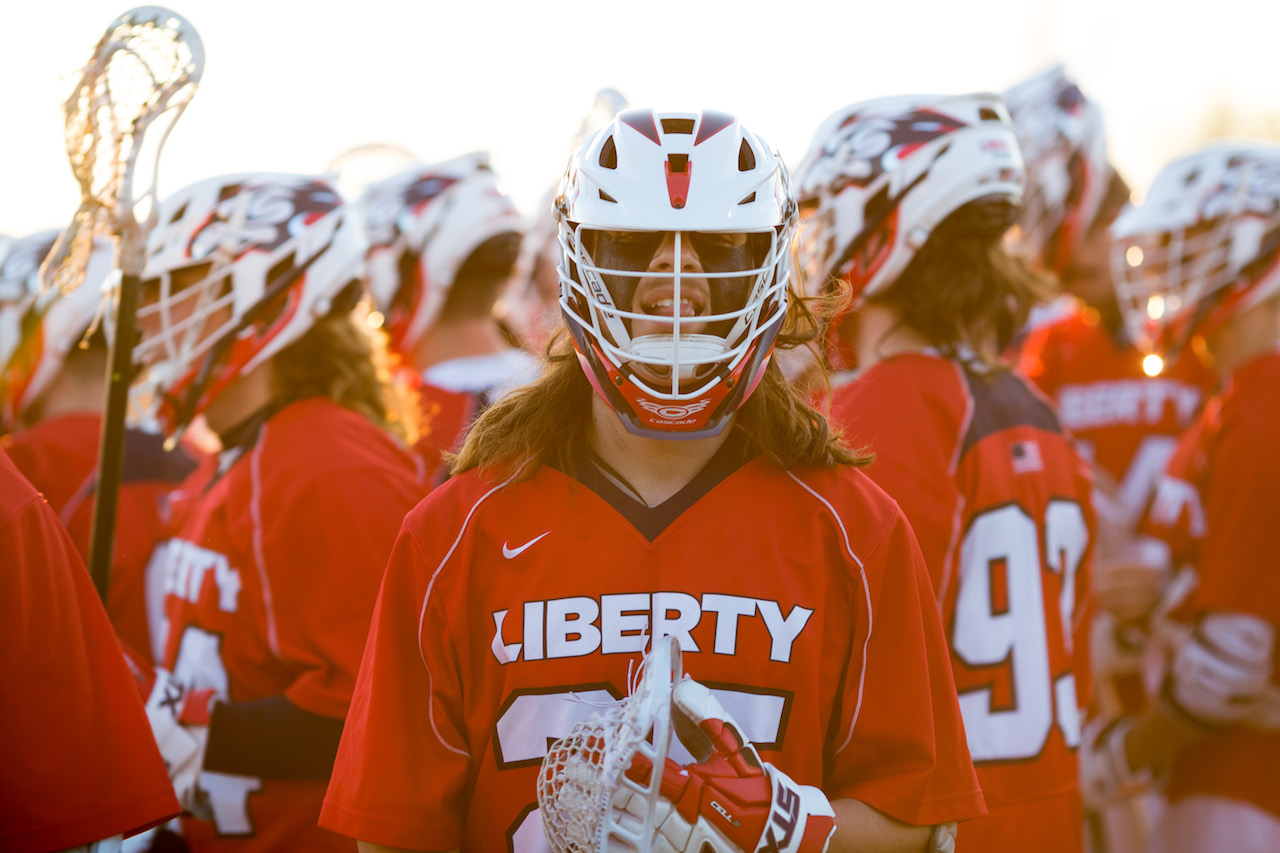Lacrosse players going to play with fewer concussions than past seasons

When the word concussion is said, many automatically think of football, a sport saturated with head injuries. However, concussions are prevalent in lacrosse as well.
As more concussion research unveils, coaches across the world are realizing that some of their players may have concussions.
Concussions may look different in lacrosse, because it is not a collision sport but a contact sport. Meaning that they are not out there trying to tackle someone but can get injured in the process of trying to get the ball from the pocket of the opposing team.
Whether getting hit with a lacrosse stick in the head or falling, concussions should not be taken lightly. This is one thing that the Liberty Men’s Lacrosse team has learned over the last few years as more and more information comes out about the seriousness of concussions.
“Concussions are a part of the game, but with everything that has come out about them, hopefully it is easier and safer for the players to say I don’t think I am okay,” Head Coach Kyle McQuillan said.

Lacrosse is one of the most physical contact sports. (Photo by Nathan Spencer)
At the beginning of every season, the players have to take a 15-minute benchmark test that will measure their reaction time. If something does happen during the season, the athletic trainers can look at the difference between the reaction time before and after the injury. They can actually see if anything is off. The athletic trainers are at every practice and game, always prepared in case something happens to one of their players.
The coaching staff for the lacrosse team takes every players complaint seriously, and they will send them to their athletic trainer to be looked at.
“If they need to sit out a practice or a game, coaches have to be seen promoting that, and put their health and well-being first,” McQuillan said.
McQuillan said sometimes the symptoms can go unnoticed by the coaches and trainers, and that they rely on either the players or the team to address the issue.
“If you promote an environment that revolves around the players safety then it will be easier, but unfortunately you’re always going to have guys who might not have realized that they had a concussion when they did,” McQuillan said.
When players get what might be an injury to the head, the protocol is to send them to the athletic trainer, and they will take the reaction test depending on how severe their symptoms are. According to Liberty athletic trainers, if players are beyond a 5 percent window from their baseline, something is wrong with their players, and that is when the athletic trainers begin doing things daily with that player to see how they are
recovering.

Many lacrosse concussions are treated late. (Photo by Nathan Spencer)
“Our first step in the process is that they are to rest, depending on how severe,” the team athletic trainer Tariq Kelly said. “Depending on what their schedule looks like they don’t go to class, and they don’t practice. They fill out a sheet of symptoms and rate them from 0-6, and every day they fill out the sheet and then once the symptom sheet says zero then they can start a new process.”
The players gradually start playing again until they no longer have any symptoms, and can fully play again. With new lacrosse helmets being put on the market every few years, Liberty always attempts to purchase them because of the university’s desire to implement the world’s newest technology so that they can protect their student athletes.
Concussions are to be taken seriously, no matter what sport that is being played. However, the liberty men’s lacrosse team is going all out to do its best so that if a player is injured they will come back in a timely manner, when their head has healed.
